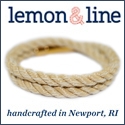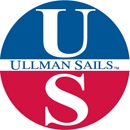
|
|
|
Scuttlebutt News: Comments regarding boom preventers Reprinted from Issue 2511, courtesy of the Cruising Club of America MAKING THE CASE FOR BOOM PREVENTERS by CCA Fleet Surgeon The incidence of injury from accidental or premature jibes is unknown but the problem is not insignificant. I became aware of the immediacy and seriousness of such accidents during the 1989 Marion Bermuda Race when a pediatrician at the helm of a fellow neurosurgeon’s boat had a fatal head injury during an accidental jibe at night. He was struck by the mainsheet as it whipped across the cockpit. The binnacle was also badly damaged by the mainsheet. Subsequently I assembled an incomplete list of 18 fatal head and/or neck injuries that occurred on “offshore” yachts during accidental jibes. A surprising number occurred in various racing venues, as follows. Racing Venues with Well Documented Fatal Jibe Head Injuries 1979 SORC boom injury 1981 Practice - USCG Academy Sailing Team boom injury 1989 Marion Bermuda Race mainsheet injury 1992 Cowe’s Week mainsheet injury 1996 Antigua Race Week mainsheet injury 1998 Ft. Lauderdale-Key West Race boom injury 2007 Atlantic Rally for Cruisers (ARC) boom or mainsheet injury In addition, in 1990 a midshipman at the US Naval Academy was in coma after a head injury during an accidental jibe and his recovery was not good enough to return to school. -- Cruising Club of America website, complete report: www.cruisingclub.org These letters followed in Issue 2512: * From Harrison Hine: It was interesting to see the article on accidental jibe fatalities in Issue 2511. It was in the late 1970's when Stan Harrison was killed in the CYC Overton Series Santa Barbara Island race. As I remember, Stan was working the foredeck when during an accidental jibe, the boom hit him in the head, he went overboard in the middle of the night, and was dead when he was recovered. As the article stated, it was a tragedy that could have been avoided with a preventer. In the early 60's, setting up a preventer when running downwind in heavy weather was standard procedure. Gradually we stopped doing it as we became a little cocky and more sure of our ability to "control" things with the lighter boats we started to sail (i.e., Cal 40's, etc.). * From Rob Stephan: I applaud CCA for publicizing a simple and effective solution for setting up a “preventer”. As I circulated this info among fellow sailors, several commented about their own head cracking learning experiences. This past year on a local basis, I know of two serious injuries that could have been much worse. It will only be used if it is installed and ready to go. Don’t just read this and tuck it away, install the turning blocks and the line before the first race. You want to be able to tell the story of how it saved you or a crewmember instead of them telling stories about you at your memorial. We then asked the ‘buttheads to submit any stories of booms breaking because of the boom preventer. Here they are: * From Bill Biewenga: We broke our boom on "Flyer" during the 1981-'82 Whitbread Round The World Race (the predecessor to the current Volvo Round the World Race). While in the second leg of the race going from Cape Town, S. Africa to Auckland, NZ, we were hit from behind by a very large breaking wave. At the time, we were racing in the Southern Ocean, and we estimated the wave heights to be in the 30' to 40' range. The helmsman was thrown off the wheel and was washed further forward past the wheel and into the cockpit sole. As "Flyer" spun out, she slid sideways down the wave. The boom, with preventer still attached, was snapped just aft of the hydraulic boom vang attachment point. Soon after we sorted the mess out, we were able to line up and drill, tap and screw a sleeve to the boom, and we were soon "back in business". Four years later, a similar situation happened on another Maxi, "NCB Ireland", in the following Whitbread. The moral to the story is that when broaching, do a controlled ease on the preventer AND release the vang. During the broach's flurry of activity, it's sometimes easier said than done, but ultimately, it'll help avoid repairs. * From Brad Van Liew: In my 100,000 miles or so of crash gybing my way across oceans, I never broke a boom except for the one that my rig fell on. Short and single-handed rigs and most notably the open boat classes heavily rely on preventers (even used as reaching vangs) and booms rarely break if they are set up with two things. The first is a fuse (normally a piece of appropriately sized spectra) that breaks in the worst case scenarios. It still holds everything in place long enough for everyone to get out of the way and take cover. The second is a preventer that is permanently rigged the whole length of the boom attached at the most fore and aft ends. Sort of a boom bridle, so you're not creating a bending moment. A well place piece of shock cord milked into the core of the line used keeps it nicely tucked out of the way when not in use. * From Bill Tyler: My experiences with the gybe-broach (aka the "Chinese") while using a preventer is that you end up knocked down to weather with the mainsail held up in the breeze pinning the boat down - as the water comes in. If the preventer isn't set up to be eased, a FAST release (sometimes with knife) to get the boat back on her feet sometimes results in the boom breaking when it hits the water - or fetches up against the main sheet. Obviously, a setup that allows the boom to be eased down avoids this result. * From Brad Avery: This has saved me from a few disasters. When offshore, a preventer should be rigged from the outer end of the boom all the way forward to the bow and back to the cockpit. The best way to do this is to keep a permanent pennant rigged from the end of the boom to about three feet from the gooseneck. Then set port and starboard preventer lines from just aft of the chain plates to the bow and back along the deck to the cockpit. When needed, tie the pennant to the lee preventer line and take up. Keeping some slack in the newly set up preventer will greatly reduce chafe. Gybing requires untying, re-securing the pennant to the boom, and then setting up the new side. Once you've done it a few times, it's quick. Beyond keeping the potential load at the end of the boom (greatly reducing the risk of breakage) the method also allows gybing and setting up the other preventer without going to the end of the boom (but you do have to take the pennant around the vang and mainsheet each gybe). Always secure the preventer in the cockpit so it can be released easily and keep a knife nearby. When not in use, make sure the pennant is secured tightly along the boom so it does not catch anyone during the gybe. * From Virginia Crowell Jones, West Tisbury, MA: The incidence of fatal and or serious head and neck injuries caused by gybes and contact with the boom, or even the sheets, is a lot larger than the CCA Fleet Surgeon compiled, and I'm surprised that he didn't include any for some of the races along Long Island Sound where I know that there have been serious accidents. It seems to me that there have been a lot of incidents over the years but perhaps they were categorized in a different way. And how about folks getting batted over board by the lift of a headsail or by spinnaker poles, spinnaker sheets, etc? Maybe the Fleet Surgeon should poll some of the major sailing clubs and yacht clubs for their experiences and compile a very comprehensive list. It would make very interesting and informative reading. * From Amy Smith Linton, Tampa FL: Back in the early 1990's, I was aboard the Cal 39 Endangered Species on the Regatta del Sol al Sol from St. Petersburg, FL to Isla Mujeres, Mexico when we broke a boom. We were a couple of hours out of Tampa Bay in breezy, bumpy conditions, flying along under a big spinnaker, with the boom vanged out to the leeward rail. I can't say if a wave tossed us, or the wind shifted, or if we just got a little beyond square, but the boat broached and the boom went boom. Fifteen exciting minutes later, we were motoring back home, with some heroic bruises but no serious damage to any crew members. The story continues with somebody breaking out the emergency rations of Yukon Jack and cigars, dueling cell phones, and having a new boom waiting for us at the dock, but the point is, yes, I believe the boom broke because of the preventer. * From Bob Hofmann: This doesn't relate to breaking a boom in an accidental jibe, but back '74 or '75, I was on a Wilson Ocean Race Series out of Santa Barbara in my Cal 34. We were running down the backside of Santa Cruz Island when we rounded up and dragged the end of the boom in the water while doing about 10 kts. We had a preventer in roughly the middle of the boom, and when we dragged the boom, it broke at the attachment point for the preventer. We were able to strip the main off the boom and get the boom cleared away. Then we rigged a pair of sheets from the main clew back to a set of turning blocks that we placed as far aft as possible on the toerails and were able to use a combination of the two sheets to trim the main. The jury rig allowed us to sail (even to weather), finish the rest of the race, and manage to take a third place in the process. I guess the moral is, learn to rig a loose footed mainsail and you can get most anywhere you need to go as long as everything else is OK. * From Euan Ross: Yes, preventers sometimes break the boom. This is from my journal of December 1989. The boat was the old maxi ‘GB2’, a sister-ship to ‘Windward Passage’, the place was the Southern Ocean. “It was a few weeks before more serious breakages began to occur. I was off-watch. We were running hard with the small kite and single-reefed main. There was about 30kts of breeze and a long swell. The steering jammed, the boat broached, the boom-end hit the water and the spar folded at the preventer. I was to discover these facts a little later. ‘All hands on deck!’ This call only ever went out when I was comfortably ensconced in my bunk, off-watch. “With all the prudence of a prairie dog rising to the sound of cocked hammers, I stuck my head out of the main hatch. At that moment, the severed stump of the boom, attached only to the flogging clew of the mainsail tore a chunk out of the deck only inches from my face. I didn’t really need the shouted warning. I ducked swiftly below, slid the hatch shut, and joined the queue to the aft companionway. The flailing boom scythed the empty centre cockpit for a few more agonizing minutes, while the guys dumped the main on the half-digested deck.” * From Skip Allan, Capitola, CA: Kudos to CCA and Scuttlebutt for publicizing the simple and effective use of a boom preventer. Most booms now days are quite rugged in the area of the vang, and this is as good or better location than the boom end for preventer attachment. Preventers do not have to be tight to be effective. They can be left with enough slack so the boom approaches, but does not cross the leeward corner of the transom. This keeps the crew and rig safe, but allows the boom to swing inward when surfing a wave, or laying down in a broach. * From Bob Steel: We managed to snap the boom in the 1975 Transpac on Sunset Blvd with the preventer. With great crew and the right tools, primarily a bandit and two aluminum bunk tubes, we made a proper jury rig boom to finish first on time in Class A. Good result and a good lesson. Aloha to the skipper Ed Lorence & crew. * From Steve Brown: During my formative offshore years, sailing Apogee with Milt and Marty Vogel, the preventer was standard tackle day or night. When things went bad, the preventer gave us a controlled fix to get things right again. As skipper of my own boat, there is no question of how and when. * From Rodger Erker: I am a big fan of preventers and use them often. When designing your preventer, there will be a weak link. Think about it and decide where you want it to be and you shouldn't break your boom. My preference is for the weak link to be at the boom/ preventer junction to avoid flying rope and ripping out lifelines, stanchions, pad eyes, etc. With a little forethought you can avoid doing more damage than if you had no preventer at all. * From Stuart Lochner, Seattle, WA: Grabbing a spare block and tackle and preventing the boom to the toe rail or shrouds always seemed like a good way to break the boom to me and I've seen it happen. Often overlooked, boom preventers always seem to be one of those "ad-hoc" devices rigged in the heat of battle. I liked the arrangement shown in the CCA article for buoy racing but it is less than ideal for long, rugged offshore legs. The rig shown would likely be subjected to some pretty high loads and break something if really loaded due to sheeting angles and the attachment point on the boom. I inherited what I think is the ultimate boom preventer system when I took over as skipper of the old 75' maxi "Ondine" (now "Atalanta"). It consists of: two pendants attached to the boom end running down both sides of the boom snap shackeled off near the gooseneck, a dedicated angled turning block on both port and starboard toe rails just aft of the bow pulpit, and two lines with snap shackles run through the turning blocks back to a spare winch (we use the lazy primary winch). When settled out on a jibe, a crew member unclips the leeward pendant at the gooseneck and clips it to the line through the leeward turning block (which leads outside the leeward shrouds). Then the line is tensioned preventing the boom. With the line is attached at the boom end and run to the bow the loads are reasonable and it is almost impossible to break the boom. The pendants on the boom could be a single line depending on how it is attached to the boom end and as long as it is re-run around the boom vang after a jibe. And the turning blocks on the bow can just be snatch blocks clipped to a strong point allowing a clear lead to the boom end. We have done some big rolls, dragging the boom in the water and gone by the lee enough to put the main aback and just straightened the old girl out and kept on racing. It did take me a while to figure out what those two big stainless turning blocks mounted on the bow at a funny angle were for. * From R. G. Newbury: Long, long ago, on a lake not too far away, we didn't break the boom with the preventer but we did learn a few hard lessons...The yacht was running, deep on starboard, surging to maybe 10 knots, when a gust made her decide to suddenly yaw 110 degrees to port and roll 110 degrees to starboard, solidly punching the spin pole straight down, and taking the B&G unit off the masthead. And the preventer kept the boom up to port and pinned the boat there, still moving about 4 knots sideways with water up to the hatch, and half the crew underwater. I ended up outside the lifelines on the hull. The bottom of the preventer was a double block with a cleat and the preventer line was far too short...I now know how surprisingly difficult it is to open a Swiss army pocketnife with your teeth. I now carry a folding knife which can be carried in a pocket and opened instantly with one hand, and which is big enough/strong enough to actually cut a line. (http://www.crkt.com/kiss.html). All sailors should carry something similar. Lessons: The preventer should be long enough, and rigged so it can be let off quickly. And every sailor should have a good knife handy. Given the PC proclivities of 'zero tolerance' idiots, young sailors might insist on a rescue-hook that has no exposed edge, but will do the job. http://www.botachtactical.com/benreshook.html And speaking of booms, on another occasion we learned that a boom should not have any hardware sticking out, so that what should be just a bruise from a flat surface does not become a serious penetrating injury. We also learned that a diamond padeye can remove a contact lens, without touching the eyeball, if you are damned lucky. It does leave a weird bruise on the temple, however. Especially dangerous are through bolts anchoring a bail. These are dangerous on all points of sail, and hell on spinnakers. * From Tom Fischbeck: The late Wendy Segal's Cal 40 broke a boom in a Transpac as told to me by Harrison Duncan (Wendy's boyfriend) as they were surfing downwind in breeze and the boom waddled into the swells as the yacht was slightly broached and the boom bent/broke as the preventer was initialized. Duncan had many tools, rivets, etc, and won some sort of "Transpac MacGyver" award for a sturdy repair "juryrigging" of the boom better than it was originally built! * From Donald T. Rave, Jr., Locust Valley, NY: I was crewing on a Tartan 10, ("Smoke' Em", owned by Walt Simendinger), in an Around Long Island Race in the early 80's. We had just come through Plum Gut heading west down Long Island Sound with a .5 oz. chute up (using a preventer that only was on so no one had to hold the boom out) when a front came through and the wind went from about 10 to what felt like over 50 knots (but no wind instruments to confirm). We started to overtake a container barge and got the whole crew on deck to gybe when a puff hit, knocking us down so that the boom went in the water. The boom immediately bent at the point where the preventer was attached. When the next wave spun the boat the other way, the boom broke in two as we jibed, but did so gently. We got all the sails down and after running under bare poles at 8+ knots for a while, we set the 1.5 oz. reaching chute with no main. The boat took off with sustained bursts of over 19 knots between knockdowns. We carried on like this for a couple of hours. As the wind began to moderate, we took teak slats supporting the bunks and jammed them into the boom at the break point, winched on the dead ended in-boom reefing lines to draw the two sections together, re-hoisted the main and managed to win our division. In retrospect, the preventer probably prevented serious injury and saved the rig, but my recollection is that we stopped using it after that because of what it did to the boom! * From Ray Tostado: I rate myself midship to the many engineers who are a part of the SB daily. But when it comes to applications I can talk the talk and finish the walk. You have energy, you have dynamic shift, (180 degree change of direction), or loading, then kinetic acceleration and blunt resistance. If the blunt resistance cannot absorb the kinetic energy then the vehicle of that energy will suffer blunt trauma failure. The boom breaks or the preventer’s anchor fails. Since 1975 every boat I have owned and raced carries permanent running preventers. I can, when in light air, use them to trim the main. I can use them to shift the mainsheet car to windward under load. When sailing under pucker time conditions, having a trimmer on the preventer is as essential as a spinnaker trimmer. The crew member's duty is to ease the gybe through it's arc by controlling the line speed, not by halting it. My goal? When a gybe is inevitable, have it occur as gradually as possible. The term "preventer” is a a misnomer. At these times the gybe is not preventable. The title should be more in line with "gybe line"; maybe "gybe trimmer", or "gybe controller". * From Michael H. Koster: The CCA Fleet Surgeon certainly makes a strong case for the use of boom preventers. A head injury is serious stuff and the seriousness is compounded when offshore, where help is not readily available. Another device that would help reduce head injury severity would be a helmet. For some reason, you do not see helmets used in sailing. Helmet use for anyone working forward of the mast with a spinnaker pole, especially at night or under adverse sea/weather conditions, is something any crew or owner should seriously consider. Maybe the place to start would be at the Navy or Coast Guard Academies, where it could easily be an "order". As for my disclaimer, I have never worn a helmet on a boat, although I do use them for cycling and alpine skiing, as well as motorcycling. Instead of tempting fate, it may be time to rethink this. * From Bill Seifert, Warren, Rhode Island: If anybody wants information on an easy to use end of boom preventer system, along with a table of how strong components should be, see Offshore Sailing- 200 Passagemaking Tips, published by the International Marine division of McGraw Hill. If anybody buys the book and does not find it useful, the author will refund your purchase price. Click here to view. * From Rich du Moulin, Larchmont, NY: On a trip home from Bermuda aboard my Express 37 LORA ANN years ago we used a normal three-ply 1/2 inch nylon dockline as a preventer. It worked so well that we have improved the system and leave it rigged 100% of the time for distance and day racing. Using a 70 foot nylon line, we clove hitch the center of the line around the boom just aft of the vang attachment, and lead the two tails forward port/starboard to snatch blocks on the rail just outboard of the shrouds and inboard of the lifelines, so a gybe doesn't bend the stanchions. Then the tails lead back to cockpit winches. When set up, we put moderate tension on the nylon. The modest stretch softens the motion, and when we have gybed, the stretch minimizes shock and allows the boom to swing about halfway to centerline. This stretch also reduces load on the boom when dragging in the water. By being lead aft, the crew can ease the preventer if the boat gets pinned, or shift port/starboard during a gybe without leaving the cockpit. Even for our windward-leeward day racing we use this rig, since it allows us to pull out the boom and get everyone on the windward side so we can roll our assym to windward (we have a sprit). On the Transpac we used this same rig with a 5/8 inch nylon three ply on FORTALEZA, a Santa Cruz 50, and it worked fine. * From Rob & Andi Overton: In reading the articles in Scuttlebutt about head injuries resulting from accidental jibes, we wondered why this danger is not more seriously considered in the design of offshore yachts, especially cruising boats. When we were looking for a safe, fast blue-water liveaboard cruiser, one of our requirements was that the mainsheet parts could not be in the cockpit. We ended up buying a Rod Stephens-designed boat with an aft cockpit and traveler forward of the dodger. The end of the boom is also forward of the cockpit, so it's impossible to get hit by either the sheet or the boom itself in an accidental jibe, and when leaving the cockpit a crew member gets to step onto the deck without worrying about being decapitated. That crew member does have to crouch as he/she goes forward, and maybe a reasonable feature for a non-racing cruiser would be for the boom to be high enough so it can't hit a standing crew member. And perhaps the regular reviews of new offshore boats in the yachting press should include comments about the safety of candidate designs in case of an accidental jibe. * From Robert T. King: I have read with interest the recent commentary on the use of a "preventer." I would like to contribute a couple of ideas: One, a "fuse" of low breaking strength (relatively lightweight) line may be added to create an intentional failure point in the preventer system. Essentially, boom breakage (due to immersion or back-winding of the main) is avoided by the fuse "blowing". Ideally, the fuse would be located at a readily accessible point in the preventer geometry, at deck level near the inboard end. Second, employing a mechanical purchase. I have had some success using a looped section of shock cord wrapped around the boom (in proximity to the vang attachment point, then shackled to the mechanical purchase). The purchase is then attached to a hard point along the toe rail. The extended length of the looped shock cord allows significant stretch; the shock cord will ultimately fail under extreme load. This system, although imprecise from an engineering perspective, is quickly rigged and easily gybed or tacked from rail to rail while remaining attached to the boom. With both systems, the fuse or shock cord failure point can be assessed at dockside by sheeting the main closer to centerline than the preventer system should permit. |

















|

